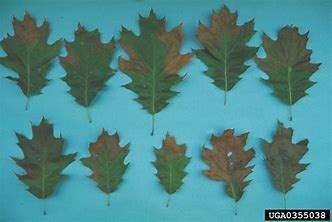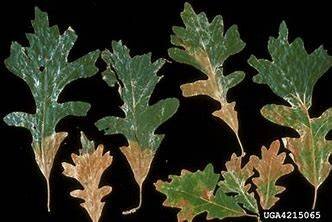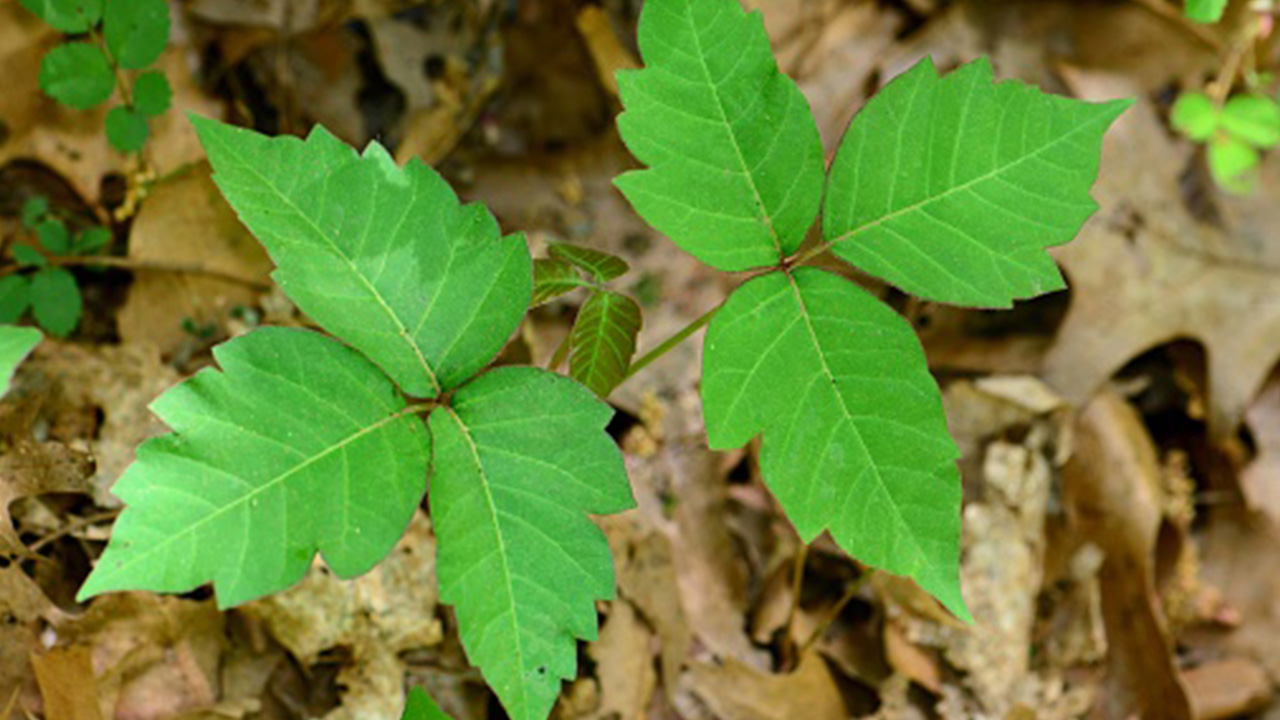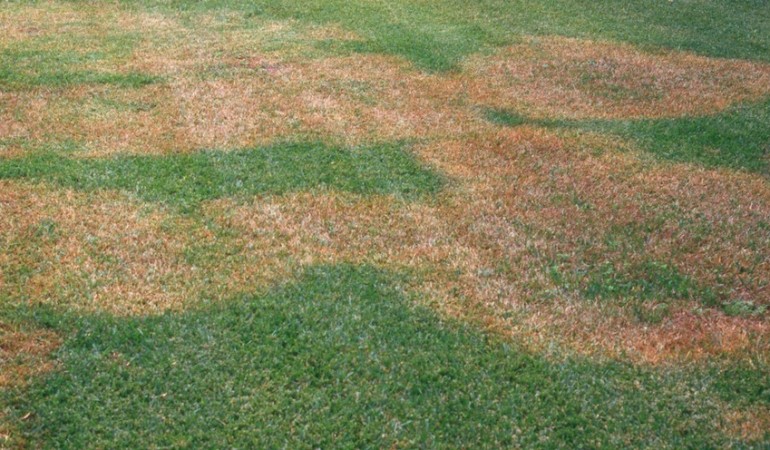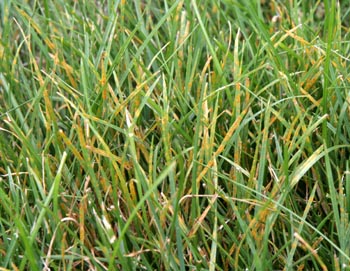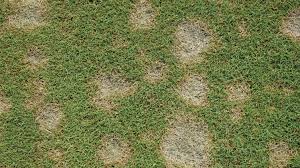Oak Wilt Alert
Oak wilt has been identified in upstate NY, in Bristol along Canandaigua Lake. This is a particularly devastating disease, especially for Red Oak varieties. The fungal pathogen is spread by insects that bore into trees. After being introduced to a healthy tree, it attacks the tree's vascular system. This process is similar to what we saw with Dutch Elm Disease many years ago. Red Oaks wilt within one season of infection, and is always fatal. White Oaks can live with the disease for several years, and can be fatal as well.
To prevent infection do not prune Oaks during the growing season. Avoid any unnecessary cuts and mechanical injury. If any wounding of live wood occurs, seal the wound if possible. Trees can also transmit from one another through root contact. Infected trees are to be removed and destroyed in cooperation with the NYSDEC forestry division. If you suspect Oak Wilt please contact your local DEC forester.
Chemical controls are available for Oak Wilt prevention in all Oak species. Therapeutic treatments may be advised in White Oaks. Please contact our Certified Arborists for a consultation.
Red Oak Wilt
White Oak Wilt
Poison Ivy Alert: July 2019
Summer is a beautiful time to spend time outside with your friends and family, enjoying everything that your yard and the outdoors have to offer. However, there are certain plants and pests that can derail your plans for enjoying nature in a hurry. One of these is Poison Ivy. Poison Ivy can be a huge threat to your loved ones and pets, having the capability to give them rashes and much worse. However, it can be dealt with in a responsible way to keep it under control and your family safe.
Toxicodendron radicans, commonly known as Poison Ivy, is a plant native to New York and much of the Eastern United States. Besides its harmful effects, Poison Ivy can be a particular nuisance because of how difficult it is to spot. Many other plants share similar leaf structures and general appearance, sometimes making it hard to tell them apart. Poison Ivy leaves always have three leaflets, with the central one being the largest with a distinct stem. The two lower leaflets are smaller, often asymmetrical, and attach directly to the leaf stem. Leaves are usually somewhat glossy especially in sun, but not always. Leaves also may have smooth margins or a few large teeth (edge looks notched) and may appear a bit reddish.
The danger of poison ivy comes from the oils that are found on its leaves. This oil, scientifically known as urushoil, inflames the skin and causes blisters and rashes on bare skin. Because these symptoms are spread via oil, it is extremely easy to unintentionally spread the Poison Ivy rash to other areas of your body. In addition, something as light as a summer breeze can pick the oil up and deposit it on your skin. This makes Poison Ivy a potent threat to your family’s well-being.
While Poison Ivy may seem scary, the good news is it is easy to take care of! Poison Ivy can easily and naturally be eliminated from your yard! For more information, click here. Stay careful around the plant even after its dead though! The harmful oils generated by the plant can stick around on the leaves even after is dead.
Lawn Disease Alert (July 2019)
With this summer’s uncharacteristic rainfall, lawns across the area have had an especially hard time. One of the biggest problems that lawns are having is an increase in lawn diseases. While a lawn disease may not seem like a big deal, if not treated they can get terribly out of control, decimating your entire lawn. Here are a few lawn diseases that show up in a New York summer to watch out for.
Brown Patch
The Brown Patch disease is caused by the Rhizoctonia solani fungus. The fungus typically does the most damage on bluegrasses, ryegrasses, and tall fescues. The symptoms of the lawn can be different depending on how it is typically cared for, but the disease can be best spotted by some kind of brown lesions on grass. These lesions appear as a large brown patch from a distance away.
Turf Rust
Caused by fungi, Turf Rust is characterized by yellow-shaded lesions that appear on blades of grass. In later stages of the disease, pustules form on the blades which release rust colored spores, which the disease is named after. All types of grass can be affected by turf rust. The fungi usually causes harm to the plant because of environmental stressors.
Dollar Spot
Dollar spot is one of the most destructive turfgrass diseases, affecting a range of grass species. Dollar spot is caused by two different kinds of fungi, forming straw colored spots anywhere from 2 to 6 inches in diameter. The disease typically manifests with high humidity and low soil moisture.
While it is best to take preventative measures to ensure the health of your lawn, if you need treatment for any lawn diseases, we can help! For an estimate, give us a call at (585) 381-9000 or visit our website today!
To read more about lawn diseases, visit the New York State Turfgrass Association or Cornell Extension websites.



